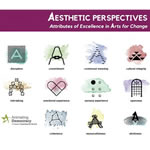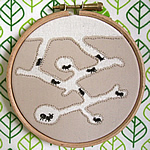A former professor of mine used to say that there are two kinds of people in the world: those who divide the world into kinds of people, and those who don’t. Now as a professor myself, I would add a third kind: those who cautiously categorize, but feel bad about it. That would be me. […]
Disinterest, distance, and the artist-manager
One of the core actions of aesthetic/artistic attention is to step back – to make a little space between yourself and the object of your attention, so you can see it as it is, rather than see it as you are. Stephen Sondheim captures this imperative (and its implications) in “Finishing the Hat” from Sunday in […]
The problem with problems
If you work in the arts in higher education (or any education, for that matter), you are likely talking or hearing more about “complex problems,” or perhaps “wicked problems.” These are shorthand for a wide range of messy, persistent, usually negative aspects of civil or global society — hunger, inequity, racism, terrorism, climate change, sectarianism, […]
Belonging gone bad
The idea of “belonging” has long been a key point of aspiration and advocacy for the arts. Art builds empathy. Art builds community. Art infuses a sense of belonging into a world so desperate for it. In these conversations, the problem is framed as a “lack of belonging,” and arts experiences are the solution. But […]
A new lens on ‘excellence’
Arts initiatives that seek social change often face an identity crisis: They are driven by passion, purpose, meaning, and making, but they are generally described and evaluated by more traditional measures. Worse than the challenge of a square peg in a round hole, “arts for change” projects aren’t pegs at all, but multi-dimensional efforts that […]
Accessible or hospitable
We talk a lot in the arts about being “accessible” — which tends to mean open and available to many different people. The assumption (and often the experience) is that a lot of artistic work is difficult to approach and challenging to engage, whether in the content itself, or in the places and practices we […]
More productive, less destructive
One of my favorite moments in any planning or strategy meeting is when someone looks suddenly resolute, and says something like: “You know what the problem is? The problem is that we don’t have a system to [do or decide or develop the thing we’re talking about].”
The Conflation Index
When faced with stress or dramatic change in our environment, we humans have a tendency to conflate things in our thinking — to bundle two or more separate ideas or issues or observations into one. It’s a coping response when the universe around us gets more complex or shifts faster than we can process.
What to stand for
I haven’t been able to assemble many words since November, so I’m grateful for those who have. On the one hand, thoughtful rhetoric and reasoned language seem increasingly discounted and disdained as core values. On the other, talk seems empty when focused and persistent action is so clearly required.
The essence of every picture
I’ve offered a few posts recently on the craft and qualities of language in advancing purposeful work. Torbert et al’s “four parts of speech” described the different colors on the palette of a well-crafted conversation. Schein’s four forms of inquiry added detail and depth to one of those types of speech. But to me, the […]











